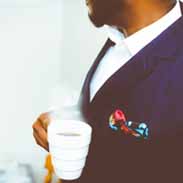Jarvis Chapter 21: Peripheral Vascular and Lymphatic System – Flashcards
Unlock all answers in this set
Unlock answersquestion
Describe the structure and function of arteries and veins.
answer
The heart pumps freshly oxygenated blood through the arteries to all body tissues. Artery walls are strong, tough, and tense to withstand pressure demands; contain elastic fibres, which allow their walls to stretch with systole and recoil with diastole. Veins are parallel that of arteries, but the body has more veins, and lie closer to the skin. Most veins carry deoxygenated blood from the tissues back to the heart; exceptions are the pulmonary and umbilical veins, both of which carry oxygenated blood to the heart. Arteries are more muscular than veins; veins are often closer to the skin and contain valves to help keep blood flowing toward the heart, while arteries carry blood away from the heart.
question
List the pulse sites accessible to examination.
answer
Temporal artery, carotid artery, brachial artery, femoral artery, popliteal artery, dorsalis pedis, posterior tibial
question
Describe three mechanisms that help return venous blood to the heart
answer
1. The contracting skeletal muscles that milk the blood proximally, back toward the heart 2. The pressure gradient caused by breathing, in which inspiration makes the thoracic pressure decrease and the abdominal pressure increase 3. The intraluminal valves, which ensure unidirectional flow
question
Define the term capacitance vessels and explain its significance.
answer
Veins have a larger diameter and are more distensible; they can expand and hold more blood when blood volume increases. This is a compensatory mechanism to reduce stress on the heart; this ability to stretch, veins are called capacitance vessels.
question
List the risk factors for venous stasis.
answer
Elderly, diabetes, obesity, peripheral vascular disease, pregnancy, smoking, varicose veins, inactivity
question
Describe the function of the lymphatic system.
answer
Retrieves excess fluid from the tissue spaces and returns it to the bloodstream. During circulation of the blood, somewhat more fluid leaves the capillaries than the veins can absorb. Without lymphatic drainage, fluid would build up in the interstitial spaces and produce edema.
question
Describe the function of the lymph nodes.
answer
Nodes filter the fluid before it is returned to the bloodstream and filter out the micro-organisms that could be harmful to the body.
question
Name the related organs in the lymphatic system.
answer
- Spleen; (1) to destroy old red blood cells (2) to produce antibodies (3) to store red blood cells (4) to filter micro-organisms from the blood - Tonsils; respond to local inflammation - Thymus; important in developing the T lymphocytes if the immune in children
question
List the symptom areas to address during history-taking relating to the peripheral vascular system.
answer
- Leg pain or cramps - Skin changes on arms or legs - Swelling in the arms or legs - Lymph node enlargement - Medication
question
Fill in the grading scale for assessing the force of an arterial pulse:
answer
• 0 = absent • 1+ , weak • 2+, normal • 3+, increased, • 4+ full, bounding
question
List the steps in performing the modified Allen test.
answer
Modified Allen test is used to evaluate the adequacy of collateral circulation prior to cannulating the radial artery; (a) firmly occlude both the ulnar and radial arteries of one hand while the person makes a fist several times. This causes the hand to blanch (b) ask the person to open the hand without hyperextending it; then release pressure on the ulnar artery while maintaining pressure on the radial artery. Adequate circulation is suggested by a return to the hands normal colour in approximately 2-5 seconds. You must occlude the both arteries uniformly with 5kg (11lb) of pressure for the test to be accurate.
question
List the skin characteristics expected with arterial insufficiency to the lower legs.
answer
Malnutrition, pallor and coolness occur with arterial insufficiency. Malnutrition: thin, shiny atrophic skin, thick-ridged nails, loss of hair, ulcers, gangrene
question
Compare the characteristics of leg ulcers with arterial insufficiency to ulcers with venous insufficiency.
answer
Arterial deficit, ulcers occur on tips of toes, metatarsal heads, and lateral malleoli
question
Fill in the description of the grading scale for pitting edema:
answer
• 1+ Mild pitting, slight indentation, no perceptible swelling of the leg • 2+ Moderate pitting, indentation, subsides rapidly • 3+ Deep pitting, indentation remains for a short time, leg looks swollen • 4+ Very deep pitting, indentation lasts a long time, leg is very swollen
question
Describe the technique for using the Doppler ultrasound to detect peripheral pulses
answer
Position person supine, with legs externally rotated so you can reach the medial ankles easily -Place a drop of coupling gel on the end of the handheld transducer -Place the transducer over a pulse site, swivelled at a 45 degree angle. -Apply very light pressure, locate the pulse site by the swishing, whooshing sound
question
Raynaud's phenomenon has associated progressive tricolor changes of the skin from ____ to ___ then to ___. State the mechanism for each of these color changes.
answer
Raynaud's phenomenon has associated progressive tricolor changes of the skin from ____ to ___ then to ___. State the mechanism for each of these color changes. White --->Blue --> Red (1) white (pallor) in top figure from arteriospasm and resulting deficit in supply; (2) blue (cyanosis) in lower figure from slight relaxation of the spasm that allows a slow trickle of blood through the capillaries and increased oxygen extraction of hemoglobin; (3) finally, red (rubor) in heel of hand due to return of blood into the dilated capillary bed or reactive hyperemia. May have cold, numbness, or pain along with pallor or cyanosis stage; then burning, throbbing pain, swelling along with rubor. Lasts minutes to hours; occurs bilaterally. Several drugs predispose to the episodes, and smoking can increase the symptoms.



